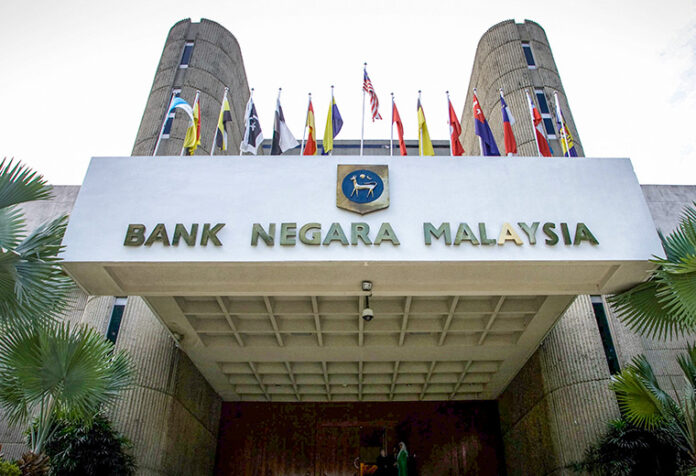KUALA LUMPUR, Aug 12 — Malaysia’s economy posted a sterling growth of 8.9 pct in the second quarter (Q2) of 2022 as domestic demand continued to strengthen, underpinned by the steady recovery in labour market conditions and ongoing policy support.
In a statement today, Bank Negara Malaysia (BNM) said the higher growth was also reflective of normalising economic activity as the country moved towards endemicity and reopened international borders.
“Exports remain supported by strong demand for electrical and electronics (E&E) products. By sector, the services and manufacturing sectors continued to drive growth,” it said.
While the gross domestic product (GDP) was lifted to some extent by the low base from the Full Movement Control Order (FMCO) in June 2021, the central bank said growth in April and May 2022 was particularly robust.
On a quarter-on-quarter seasonally-adjusted basis, it said the economy increased by 3.5 per cent as compared to 3.8 per cent in Q1 2022.
Malaysia’s economy posted a sterling growth of 8.9 pct in the second quarter (Q2) of 2022 as domestic demand continued to strengthen, underpinned by the steady recovery in labour market conditions and ongoing policy support.
In a statement today, Bank Negara Malaysia (BNM) said the higher growth was also reflective of normalising economic activity as the country moved towards endemicity and reopened international borders.
“Exports remain supported by strong demand for electrical and electronics (E&E) products. By sector, the services and manufacturing sectors continued to drive growth,” it said.
While the gross domestic product (GDP) was lifted to some extent by the low base from the Full Movement Control Order (FMCO) in June 2021, the central bank said growth in April and May 2022 was particularly robust.
On a quarter-on-quarter seasonally-adjusted basis, it said the economy increased by 3.5 per cent as compared to 3.8 per cent in Q1 2022.
During the quarter, BNM said headline and core inflation increased to 2.8 and 2.5 per cent, respectively, as compared to 2.2 and 1.7 per cent recorded in the Q1, reflecting an improvement in demand conditions amid the high-cost environment, with price increases mainly driven by food away from home and other food items.
With the growth in the first half of 2022 at 6.9 per cent, the central bank said the economy is projected to expand further for the remainder of the year.
BNM Governor Tan Sri Nor Shamsiah Mohd Yunus said that while external demand could face headwinds from slower global growth, the Malaysian economy will continue to be supported by firm domestic demand moving forward.
“Growth would also benefit from improving labour market conditions and higher tourist arrivals, as well as continued implementation of multi-year investment projects,” she said.
However, BNM said Malaysia’s growth remains susceptible to weaker-than-expected global growth, further escalation of geopolitical conflicts and worsening supply chain disruptions.
“Headline inflation is projected to trend higher in some months during the remainder of the year, due partly to the base effect from the discount on electricity prices implemented in Q3 2021. Core inflation is expected to average higher in 2022, as demand continues to improve amid the high-cost environment.
“The extent of upside pressures on inflation is expected to remain partly contained by the existing price control measures, fuel subsidies and the continued spare capacity in the economy,” it said.
Nevertheless, BNM said the inflation outlook continues to be contingent on upside risks stemming from the strength of domestic demand, global price developments, and domestic policy measures.
Meanwhile, the ringgit depreciated by 4.6 per cent against the US dollar in Q2 2022 and 6.3 per cent year to date (YTD) until Aug 10, 2022, broadly in line with the movement of regional currencies (Q2 2022: -4.7 per cent; YTD: -5.8 per cent).
According to the central bank, this largely reflected the continued strengthening of the US dollar following aggressive US monetary policy tightening, increased investors’ risk aversion due to the weaker global growth outlook and the military conflict in Ukraine.
“Nonetheless, elevated commodity prices and Malaysia’s economic recovery helped to cushion the downward impact from the external developments on the ringgit during the quarter.
“Going forward, while domestic financial markets will continue to be subjected to episodes of heightened volatility, spillovers to domestic financial intermediation are expected to remain broadly contained, supported by Malaysia’s healthy external position and strong banking system,” it said.
During the quarter, the central bank said net financing to the private sector grew by 4.9 per cent as compared to 4.5 per cent in the previous quarter amid higher growth in outstanding loans (5.4 per cent; Q1 2022: 4.4 per cent).
“Outstanding corporate bond growth moderated (3.4 per cent; Q1 2022: 4.6 per cent) as growth in bond redemptions continued to outpace that of issuances. Outstanding business loans grew by 5.5 per cent (Q1 2022: 4.3 per cent), following strong expansion in loan disbursements for both working capital and investments.
“For households, outstanding loan growth increased further (5.7 per cent; Q1 2022: 4.8 per cent), with higher growth recorded across all loan purposes. Loan disbursements remained robust amid strong loan demand, particularly for the purchase of cars and houses,” it said.
Overall, BNM said loan repayments for both the business and household segments have been encouraging upon the lapse of repayment assistance programmes and the reopening of the economy.
















